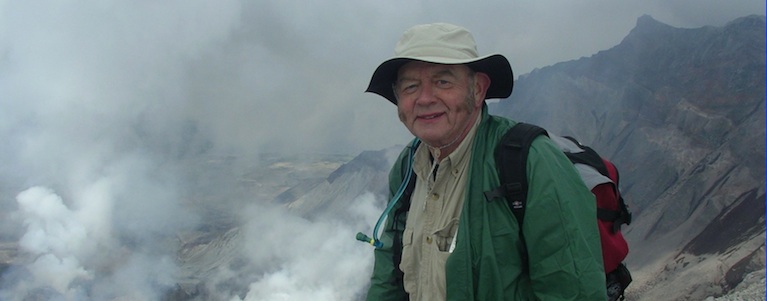Ice Caves and Lava Tubes
On earth where the temperature is usually higher than freezing, that is, above the freezing point of water, water is normally liquid. But on other planets whose surface temperature is below the freezing point of water, water is normally a rock forming part of the “ground,” the surface of the planet.
On Mt. Rainier, we have water flowing in creeks beneath the ice. We call them ice caves.
Around lava flows we also have liquid lava flowing beneath rock, cooled solidified lava, and if the lava runs out leaving them hollow, we call them lava tubes.

Huge lava tubes on Moon and Mars suggested as ideal sites for bases.
We can find lava tubes on planet Earth, but also on the subsurface of the Moon and Mars according to the high-resolution pictures of lava tubes’ skylights taken by interplanetary probes. Evidence of lava tubes was often inferred by observing linear cavities and sinuous collapse chains where the galleries cracked,” explains Francesco Sauro. The morphological surface expression of lava tubes on Mars and the Moon is similar to their terrestrial counterpart. Speleologists thoroughly studied lava tubes on Earth in Hawaii, Canary Islands, Australia and Iceland.”
“We measured the size and gathered the morphology of lunar and Martian collapse chains (collapsed lava tubes), using digital terrain models (DTMs), which we obtained through satellite stereoscopic images and laser altimetry taken by interplanetary probes,” re-minds Riccardo Pozzobon. “We then compared these data to topographic studies about similar collapse chains on the Earth’s surface and to laser scans of the inside of lava tubes in Lanzarote and the Galapagos.”
Researchers found that Martian and lunar tubes are respectively 100 and 1,000 times wider than those on Earth, which typically have a diameter of 10 to 30 meters. Lower gravity and its effect on volcanism explain these outstanding dimensions (with total volumes exceeding 1 billion of cubic meters on the Moon).
Thus the martian tubes are likely a half mile wide and the lunar ones many miles wide, and both 25 or more miles long, the size of a large city.
“What is most important is that, despite the impressive dimension of the lunar tubes, they remain well within the roof stability threshold because of a lower gravitational attraction,” explains Matteo Massironi, professor of Structural and Planetary Geology at the University of Padua.
Francesco Sauro concludes: “Lava tubes could provide stable shields from cosmic and solar radiation and micrometeorite impacts which are often happening on the surfaces of planetary bodies. Moreover, they have great potential for providing an environment in which temperatures do not vary from day- to night-time.”
Info: shpr.fyi/lavatubes
Martian rivers and other water flows may have occurred beneath sheets of ice
New research finds martian valleys resemble rivers running under glaciers on Earth, mean-ing ancient Mars may have been a more frigid world than once thought.
The evidence that water once existed on Mars is unmistakable: The planet is covered in valleys that appear carved by flowing water. For decades, these epic ravines and branching riverbeds beckoned planetary scientists to imagine a 3.5-billion-year-old world that was both warm and wet, covered with lakes and rivers — possibly hosting an environment conducive to life.
But new research suggests Mars might not have been the balmy paradise scientists once envisioned. Now, the evidence seems to suggest that rivers may not have covered its surface, but instead flowed deep under large sheets of ice.
To come to this conclusion, the researchers performed a statistical analysis of the shapes and patterns of 66 networks of valleys on Mars, which are composed of over 10,000 individual valleys. They then com-pared these to similar features on Earth.
They found that 14 of the martian sites appeared to have characteristics reminiscent of above-ground rivers. But 31 seemed to be carved out by either glacial or subglacial melt-water, more like terrain found near former glaciers on Earth.
Info: shpr.fyi/waterunderice
-Dave Bunting

